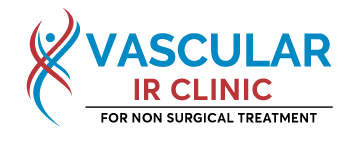Varicose Veins treatment is of two types traditional surgical procedure and the latest invasive non-surgical procedure. Varicose veins are treated by interventional radiologists or by a vascular surgeon. Dr. Sridhar Reddy Baddam is one of the finest doctors in southern India to treat varicose veins using the latest procedures, Sridhar Reddy has treated many cases of varicose veins in Hyderabad, Guntur, Vijayawada, Vizag and other parts of Andhra and Telangana.
As explained varicose veins treatment can be either conservative or active. Active treatments can be divided into surgical and non-surgical treatments. Newer methods including endovenous laser treatment, radio-frequency ablation, and foam sclerotherapy appear to work as well as surgery for various of the greater saphenous vein.
Conservative:
Conservative treatments such as support stockings should not be used unless treatment was not possible.
The symptoms of varicose veins can be controlled to an extent with the following:
- Elevating the legs often provides temporary symptomatic relief.
- Advice about regular exercise sounds sensible but is not supported by any evidence.
- The wearing of graduated compression stockings with variable pressure gradients (Class II or III) has been shown to correct the swelling, nutritional exchange, and improve the microcirculation in legs affected by varicose veins. They also often provide relief from the discomfort associated with this disease. Caution should be exercised in their use in patients with concurrent arterial disease.
- The wearing of intermittent pneumatic compression devices have been shown to reduce swelling and increase circulation Diosmin/hesperidin and other flavonoids.
- Anti-inflammatory medication such as ibuprofen or aspirin can be used as part of treatment for superficial thrombophlebitis along with graduated compression hosiery – but there is a risk of intestinal bleeding. In extensive superficial thrombophlebitis, consideration should be given to anti-coagulation, thrombectomy, or sclerotherapy of the involved vein.
- Topical gel application helps in managing symptoms related to varicose veins such as inflammation, pain, swelling, itching, and dryness. Topical application (noninvasive) has patient compliance.
Surgical
Surgeries have been performed for over a century, from the more invasive saphenous stripping to less invasive procedures like ambulatory phlebectomy and CHIVA.
Stripping
Stripping consists of removal of all or part the saphenous vein (great/long or lesser/short) main trunk. The complications include
- Deep vein thrombosis (5.3%),
- Pulmonary embolism (0.06%), and
- Wound complications including infection (2.2%).
There is evidence for the great saphenous vein regrowing after stripping.
For traditional surgery, reported recurrence rates, which have been tracked for 10 years, range from 5–60%. In addition, since stripping removes the saphenous main trunks, they are no longer available for use as venous bypass grafts in the future (coronary or leg artery vital disease)
Other surgical treatments are:
- Ambulatory phlebotomy
- Vein ligation is done at the saphenofemoral junction after ligating the tributaries at the sephanofemoral junction without stripping the long saphenous vein provided the perforater veins are competent and absent DVT in the deep veins. With this method, the long saphenous vein is preserved.
- Cryosurgery– A cryoprobe is passed down the long saphenous vein following saphenofemoral ligation. Then the probe is cooled with NO2 or CO2 to −85o F. The vein freezes to the probe and can be retrogradely stripped after 5 seconds of freezing. It is a variant of Stripping. The only point of this technique is to avoid a distal incision to remove the stripper.
